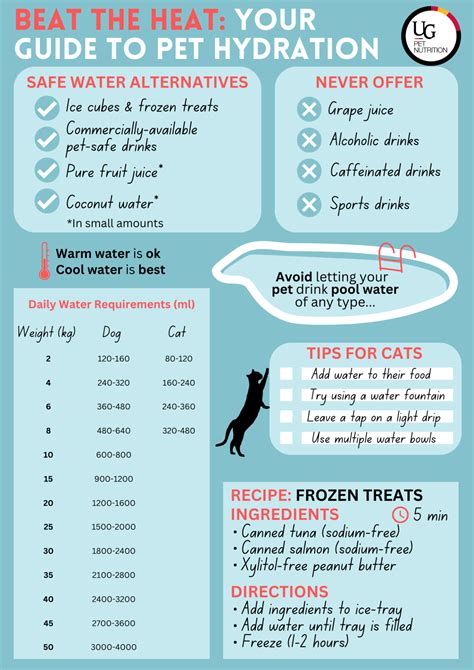Pets, like humans, require ample hydration to maintain optimal health and well-being. Water plays a crucial role in various bodily functions, including digestion, circulation, and waste removal. Ensuring the availability of clean, fresh water for your furry companion is paramount. However, not all water sources are created equal, raising concerns about pet hydration and water quality.

The Importance of Pet Hydration
According to the American Kennel Club, water constitutes 50-70% of an adult dog’s body weight and up to 80% of a puppy’s body weight. Proper hydration is essential for:
- Maintaining electrolyte balance: Water helps regulate electrolytes, including sodium, potassium, and chloride, ensuring proper nerve and muscle function.
- Facilitating digestion: Water aids in the breakdown of food and the absorption of nutrients. It also prevents constipation.
- Preventing urinary tract problems: Water dilutes urine, reducing the risk of crystal formation and urinary tract infections.
- Regulating body temperature: Evaporation of water from the skin helps cool down pets during hot weather.
Potential Risks of Inadequate Hydration
Dehydration can occur when pets do not consume enough water or lose too much fluid through vomiting, diarrhea, or exercise. Signs of dehydration include:
- Lethargy
- Loss of appetite
- Dry gums
- Sunken eyes
- Decreased urination
Prolonged dehydration can lead to severe consequences, including kidney failure, electrolyte imbalances, and even death.
Factors Affecting Water Quality
The quality of water available to pets can vary significantly depending on various factors:
- Source: Tap water, well water, and bottled water can have different levels of contaminants, such as bacteria, parasites, and heavy metals.
- Treatment: Municipal water supplies undergo treatment processes, including filtration and disinfection, to remove contaminants. However, private wells may not receive the same level of treatment.
- Storage: Improper storage of water sources, such as open containers or contaminated dishes, can introduce bacteria and other contaminants.
Assessing Water Quality
Determining the quality of water available to your pet is crucial. Consider the following methods:
- Testing: Water testing kits can detect contaminants such as bacteria, chlorine, and nitrates.
- Observation: Look for signs of contamination, such as discoloration, odor, or floating particles.
- Consultation with a veterinarian: Your veterinarian can provide advice on assessing water quality and recommend appropriate precautions.
Ensuring Safe and Clean Water for Pets
Providing your pet with safe and clean water is essential. Here are some tips:
- Use filtered water: If possible, opt for filtered tap water or bottled water for your pet. This removes impurities and contaminants.
- Change water regularly: Refresh your pet’s water bowl daily to prevent bacterial growth.
- Clean water bowls thoroughly: Wash water bowls with soap and water daily to remove biofilm and prevent contamination.
- Provide multiple water sources: Place water bowls in various locations throughout your home to encourage your pet to drink regularly.
- Consider a pet water fountain: Pet water fountains circulate and filter water, providing your pet with a constant supply of fresh water.
Table 1: Common Contaminants in Pet Water
| Contaminant | Potential Health Risks |
|---|---|
| Bacteria | Gastrointestinal problems, urinary tract infections |
| Parasites | Diarrhea, vomiting, weight loss |
| Heavy metals | Kidney damage, neurological problems |
| Chlorine | Skin irritation, gastrointestinal problems |
| Nitrates | Birth defects, reproductive problems |
Table 2: Guidelines for Pet Water Consumption
| Pet Type | Average Daily Water Intake |
|---|---|
| Dogs | 1 ounce per pound of body weight |
| Cats | 4-6 ounces per 5 pounds of body weight |
| Rabbits | 10 ounces per 5 pounds of body weight |
| Guinea pigs | 20 ounces per 2 pounds of body weight |
| Hamsters | 1 ounce per 1 pound of body weight |
Table 3: Signs of Dehydration in Pets
| Symptom | Severity |
|---|---|
| Dry gums | Mild |
| Sunken eyes | Moderate |
| Lethargy | Severe |
| Decreased urination | Severe |
| Rapid or shallow breathing | Critical |
Table 4: Tips for Encouraging Your Pet to Drink More Water
| Tip | Explanation |
|---|---|
| Add chicken or beef broth to water | Pets are attracted to the flavor and smell. |
| Freeze water in ice cubes | Pets may enjoy licking and chewing on ice cubes. |
| Offer water-rich treats | Fruits and vegetables, such as watermelon and cucumbers, contain high water content. |
| Monitor food intake | Dry food contains less moisture than wet food, so pets may need to drink more water if they eat dry food. |
| Provide a quiet and comfortable drinking area | Pets may not drink if they feel stressed or threatened. |
Conclusion
Pet hydration and water quality are crucial aspects of maintaining your companion’s health and well-being. By understanding the importance of hydration, identifying potential risks, and taking steps to ensure the availability of safe and clean water, you can provide your pet with the best care possible. Remember, every sip of clean water contributes to your pet’s longevity and quality of life.





















